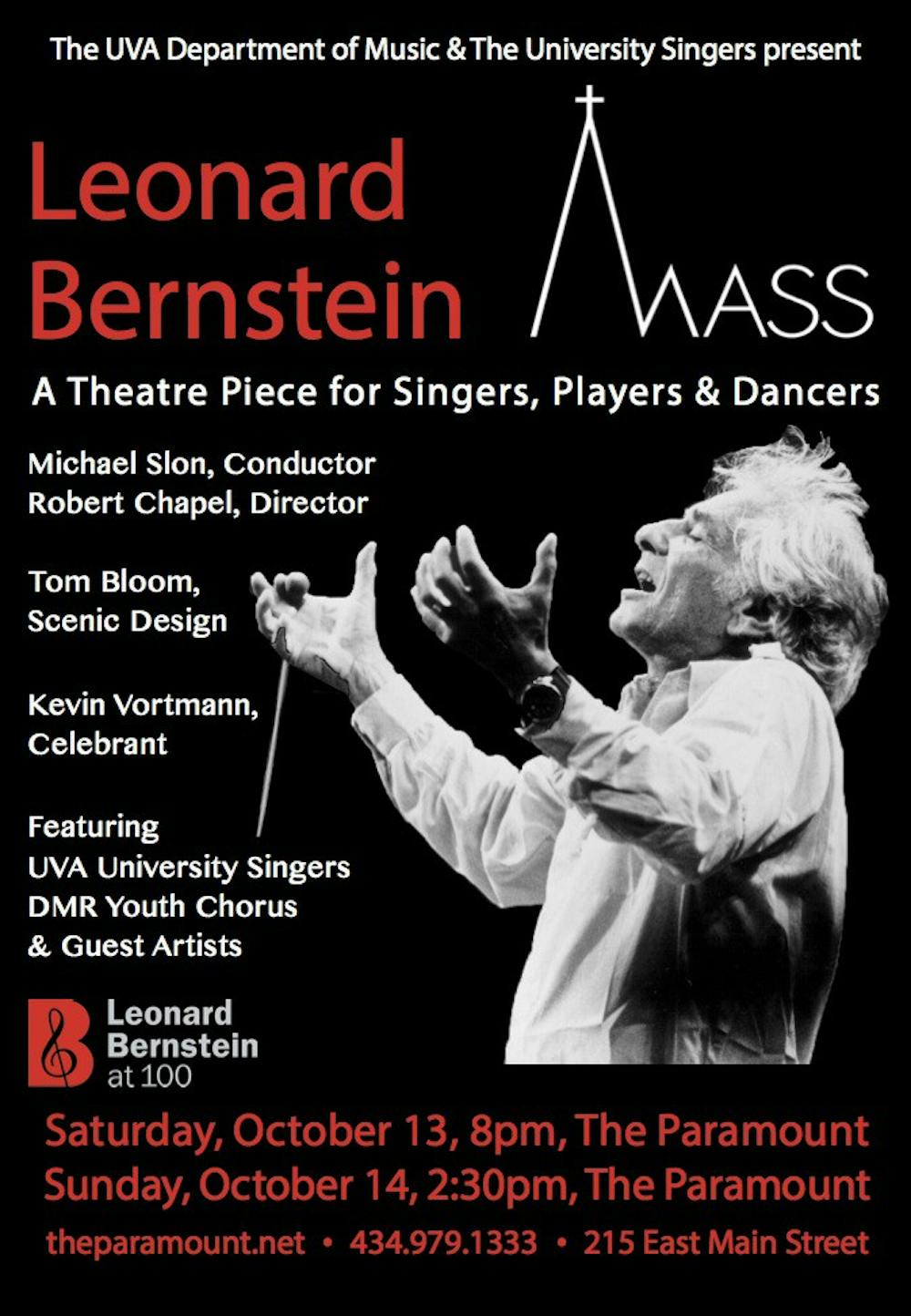Acclaimed composer Leonard Bernstein’s 99th birthday last August initiated a year of celebration for many music lovers across the globe. The so called “Bernstein Centennial,” a year-long celebration of the life and work of the influential musician, was embraced by a wide variety of performance groups and has resulted in his work springing up in many different areas. The University Singers brought this excitement to Charlottesville over the past weekend, through the production of one of Bernstein’s most well-known pieces — “Mass,” a theatrical exploration of the questions of faith and doubt. Over 150 performers joined together to present two shows at the Paramount Theater.
As the lights dimmed and the orchestra swelled for the first time, the raw vocal strength of featured soloist Kevin Vortmann immediately set the tone for the performance. His consistency and power throughout the show as the Celebrant, a manifestation of traditional faith, was a strong foundation upon which the other performers were able to branch off into different genres and ideas. The University Singers supported him from a distance, their high placement and soaring vocals reminiscent of an angel’s choir singing praises from above. The Dreams Made Real Youth Chorus, a local children’s singing group, were also consistently strong, their intermittent appearances bringing a much-needed breath of refreshing joy to a show based on an otherwise heavy subject matter.
The true spirit of the performance, however, came from the Street Chorus, a small group of featured singers who served as the collective voice of doubt and rebellion, occasionally breaking off to explore their own personal questions and concerns. This ensemble was the heart of the piece, their dynamic energy bringing a sense of life and excitement to the story. As individuals, each vocalist was distinct and stunningly powerful, but as a group, the Street Chorus moved the story along with almost overwhelming force, especially when compared to the more reserved roles of the Celebrant and the University Singers.
Assisting in this role of story development were three featured dancers, whose appearances reflected the mood of each scene in a subtle, yet powerful manner. Practically, they seamlessly aided in transitions, moving set pieces on and off with seemingly no effort. Artistically, they brought another layer to the story, giving it a richer, more powerful effect, as physical representations of the ideas being questioned.
The venue of this performance also helped to set the stage for a memorable evening. As a piece which deals heavily with the contrast and conflict between the traditional and the contemporary, it was especially significant for “Mass” to be shown at The Paramount, a theater stiff with formality and tradition. This opportunity was clearly noticed and utilized by the set design, which was eye-catching even before the lights dimmed as an integration of modern technology and traditional church structure. The performers truly made full use of the space, interacting with the audience and moving among the aisles throughout the show. This connected to the unorthodox nature of the piece, elaborating upon the theme of defying the establishment and exploring new ideas.
Standing on its own, Bernstein’s “Mass” is somewhat repetitive, following a relatively simple structure of alternating scenes of tradition and rebellion. As the piece progresses, these two divisions increasingly interact, leading to a final expression of cathartic reaffirmation. As a 110-minute show, this certainly has the capacity to become tedious and dull, especially considering the vagueness of many of the songs’ lyrics. However, this production was able to use the ambiguity to their advantage, and embraced the challenge of interpreting each section in a new and interesting way. No two moments were the same, and each performer was able to craft a specific story from the text which so easily could have lent itself to monotony. The integration of the dancers also helped in this variety, as their appearances provided the audience with an additional stimulus during moments when the music alone was not particularly compelling.
The story of “Mass” is one of a crisis of faith and the pervasiveness of doubt, and while this message was certainly conveyed effectively, there was no doubt about the ability of the performers themselves. The stunning and compelling work of this large group of artists brought to life a story which remains as relevant today as it was during the lifetime of its creator. Just as the piece closes with a reaffirmation of the tenacity of the human spirit, so too does the unwavering talent of the performers remind the audience of the wonders of human ability.





